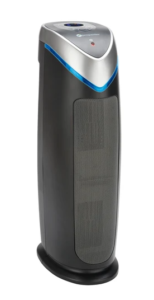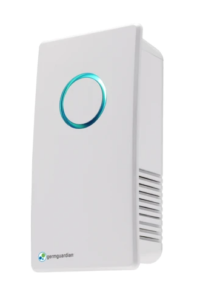
Many of our readers wonder if the air purifiers on the market really clean out dust, smoke, germs, pet hair, mold, mildew, and more as claimed. Air purifier manufacturers claim that the appliances cleanse indoor air getting rid of all air pollutants including smoke, pet hair, and odor, dust, mold among others.
It is a known fact that the air quality in our homes has declined due to industrial air pollution and natural disasters. To make the matters worse, indoor air has higher levels of pollutants than outdoor air because of poor ventilation.
Also, concerns over air quality have increased because many people are spending much more time indoors than in the past due to diminishing green spaces and the pandemic.
Additionally, health experts have raised an alarm over the increase of respiratory illnesses caused by indoor air pollution. These concerns make people question whether air purifiers are a reliable solution to indoor air pollution. The answer to that question is yes, to an extent.
How Do Air Purifiers Work?
Air purifiers are a significant addition to your home to deal with air pollution. But how exactly do they work to clean indoor air? The air purifiers work by cleaning the air which may have pollutants and allergens such as dust, pollen, pet dander, mold, mildew, smoke among others.
Types of Air Purification Technologies
Air purifiers remove pollutants as well as sanitize the air to improve the air quality in the home. The type of air pollutants removed by an air purifier depends on the device you purchase. Some designs include filters that trap pollutants as the air runs through the device.
Activated carbon
Most air purifiers are fitted with activated carbon made from burned wood to aid in air purification. Although it seems like a new health trend, activated carbon has been used in air purification for a long time. The porous carbon attracts air pollutants such as bad smells and gases such as volatile organic compounds (VOCs) found in tobacco.
However, the activated carbon does not remove some pollutants such as mold and dust. Therefore, the technology must be work in conjunction with other air purification systems such as high-efficiency particulate air filters (HEPA).
True HEPA
The HEPA air filtration technology uses filters that trap pollutants from the air by blowing air through a dense fiber mesh. For an air purifier to be considered to have a true HEPA filter, the fiber weave must meet the requirement to remove 99.97 percent of particles at 0.3 microns in size. The filters remove air pollutants such as smoke, mold, pollen, dust, among other impurities.
Ionizers
In addition, some devices sanitize the pollutants without filtering them. Filter-less air purifiers depend on ionization technology to clean the air. Through ionization, the device attracts the pollutant particles in the air to clean them.
The device’s negative ions bind to the positive ions on dust and allergens to remove them out of the air. However, you must ensure that the filterless air purifier you chose does not produce ozone, because the gas is a respiratory system irritant and can make respiratory illnesses such as asthma worse.
UV
Besides, some air purifiers use ultraviolet light (UV) filters to destroy biological air pollutants such as bacteria, mold, and viruses. By doing so, the appliances restore indoor air integrity and prevent the onset and aggravation of respiratory ailments.

Are Air Purifiers Effective?
Air purifiers reduce indoor air pollution as claimed. However, the appliances do not remove or sanitize all the pollutants and allergens from your home. This is because many of these pollutants hide in soft and absorbent surfaces such as cushions, bedding, and carpets.
Nonetheless, an air purifier when used together with other complementing strategies can help get rid of air pollutants from the home. You can improve the effectiveness of the air purifier by keeping the windows open when possible to enhance air circulation.
Similarly, you can minimize indoor air pollution by reducing the use of wood fires and candles. Also insist that smokers smoke outside the house to reduce pollutant overload. Another way to complement the air purifier is by vacuuming the house regularly to trap dust from the air instead of letting it run through the air purifier.
Further, ensuring that you change the removable filters on time maximizes the appliance’s effectiveness. Most removable air filters need to be changed once or twice a year. Also, ensure that the washable and permanent air filters are washed or vacuumed as needed. Kitchen smells and smoke can be managed by the use of a hood and cleaning the equipment after use.
When Air Purifiers Won’t Work
Sometimes, air purifiers may not work as expected. Even though this is a rare occurrence, the below instances may impact their efficiency:
Too large a room
Consider the manufacturer’s recommended room coverage for an air purifier. Using a small air purifier for a large room will not clean the air as desired.
Continuous air pollution in the home
Despite the newest air purification technologies, the devices won’t work effectively if you do not take other steps to improve indoor air quality. Adequate ventilation, use of organic home cleaning detergents a well as cleaning couches, carpets, bedding, and cushions will help improve the effectiveness of air purifiers.
Final Thoughts
A plethora of research on air quality indicates that the use of air purifiers helps to remove pollutants from the indoor air. Depending on the technology employed by an air purifier, the device can remove large particles such as hair and dust, smaller particles such as gases, and biological pollutants such as bacteria, viruses, and mold.
Similarly, you can improve the effectiveness of air purifiers by adopting other strategies that minimize indoor air pollution. The use of air purifiers in conjunction with other strategies can be effective in preventing and managing respiratory health problems.